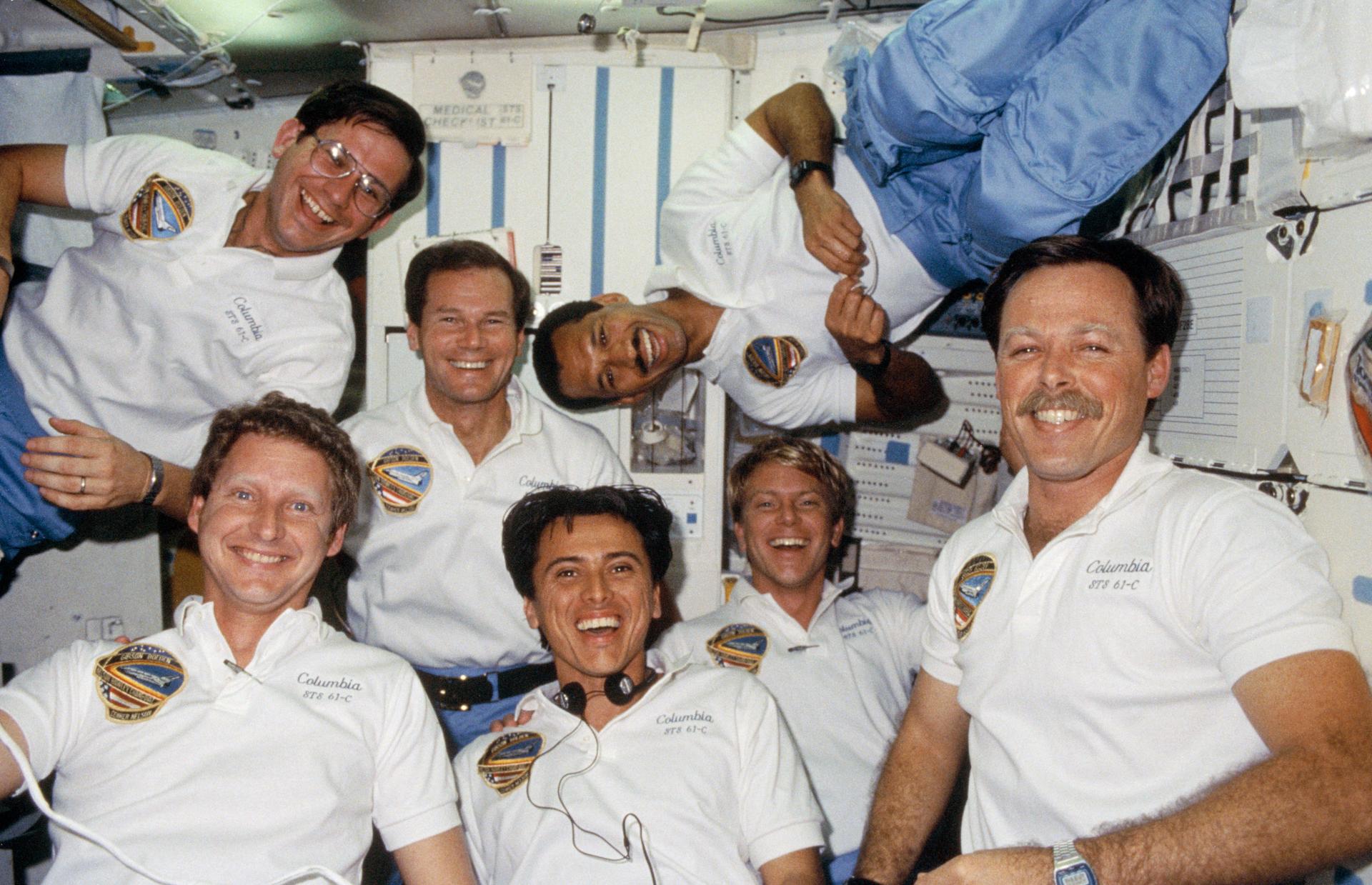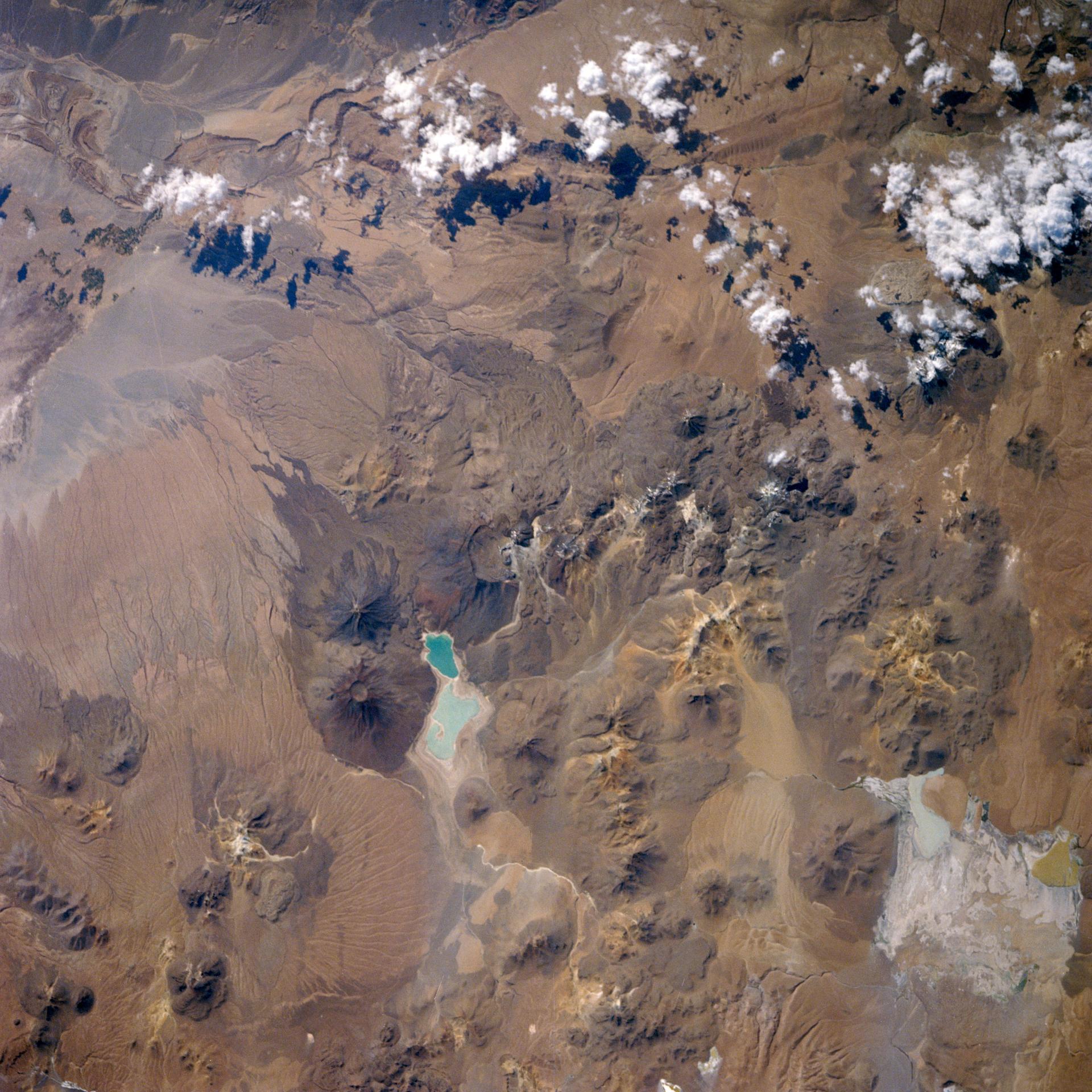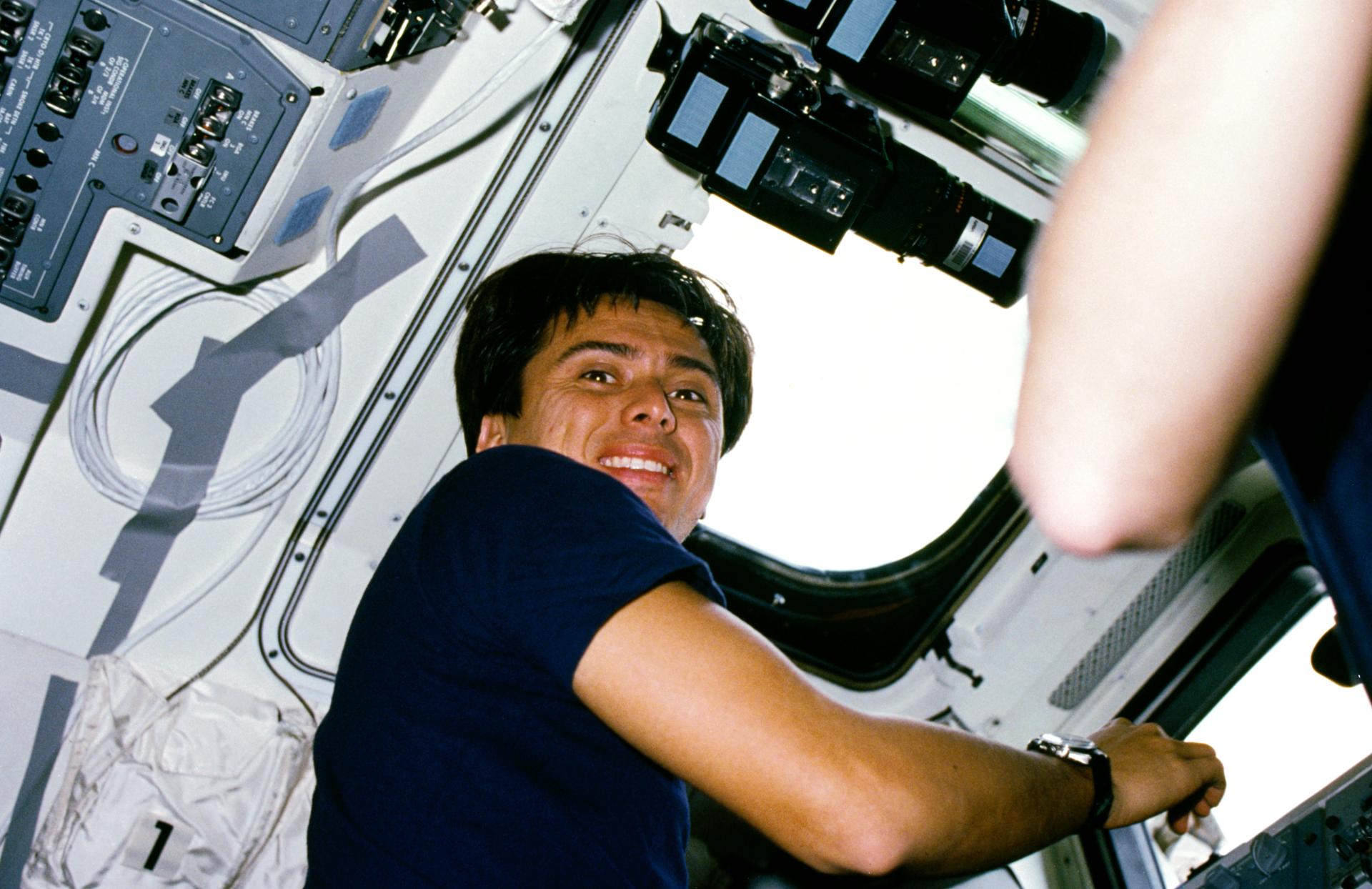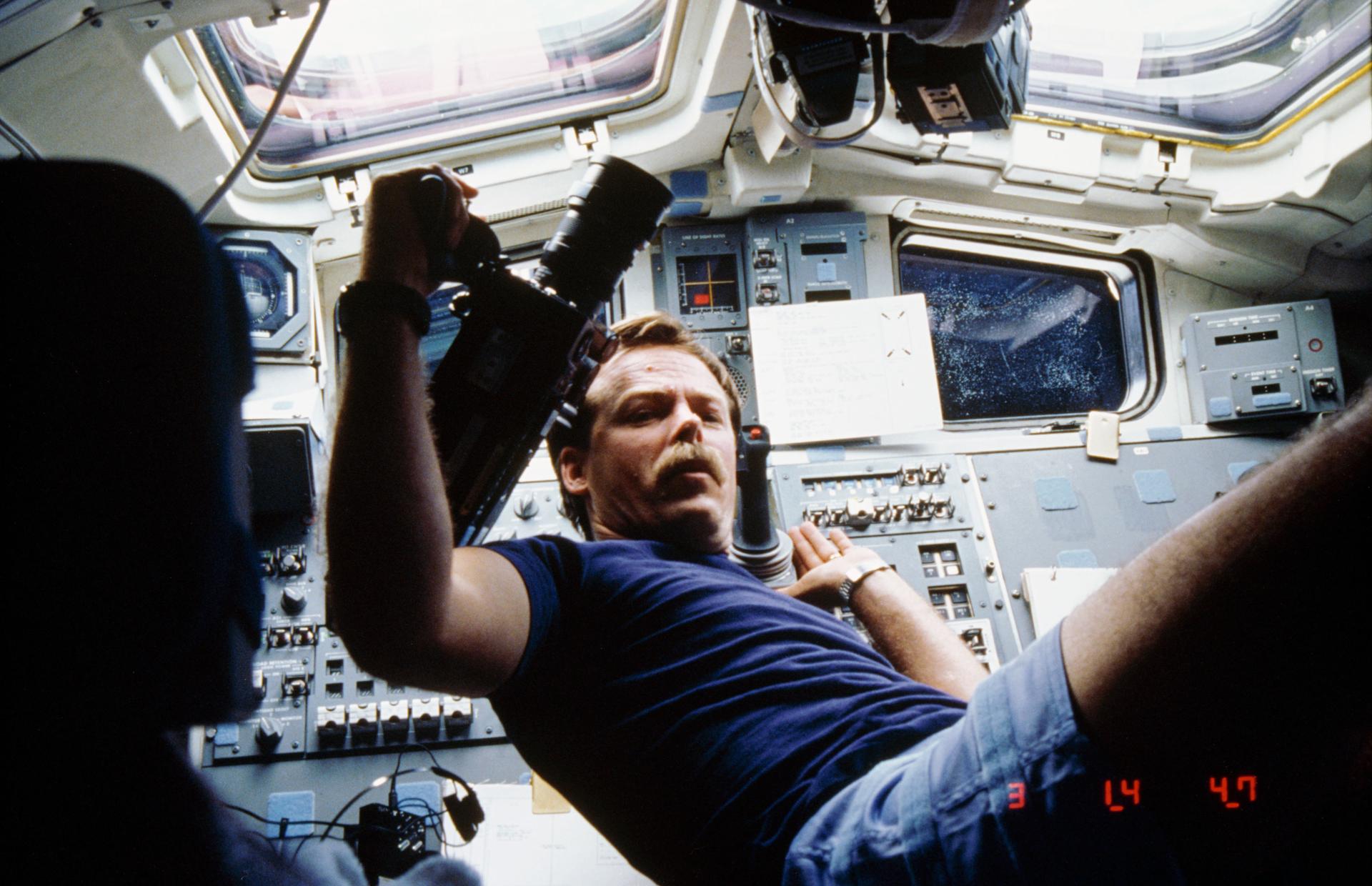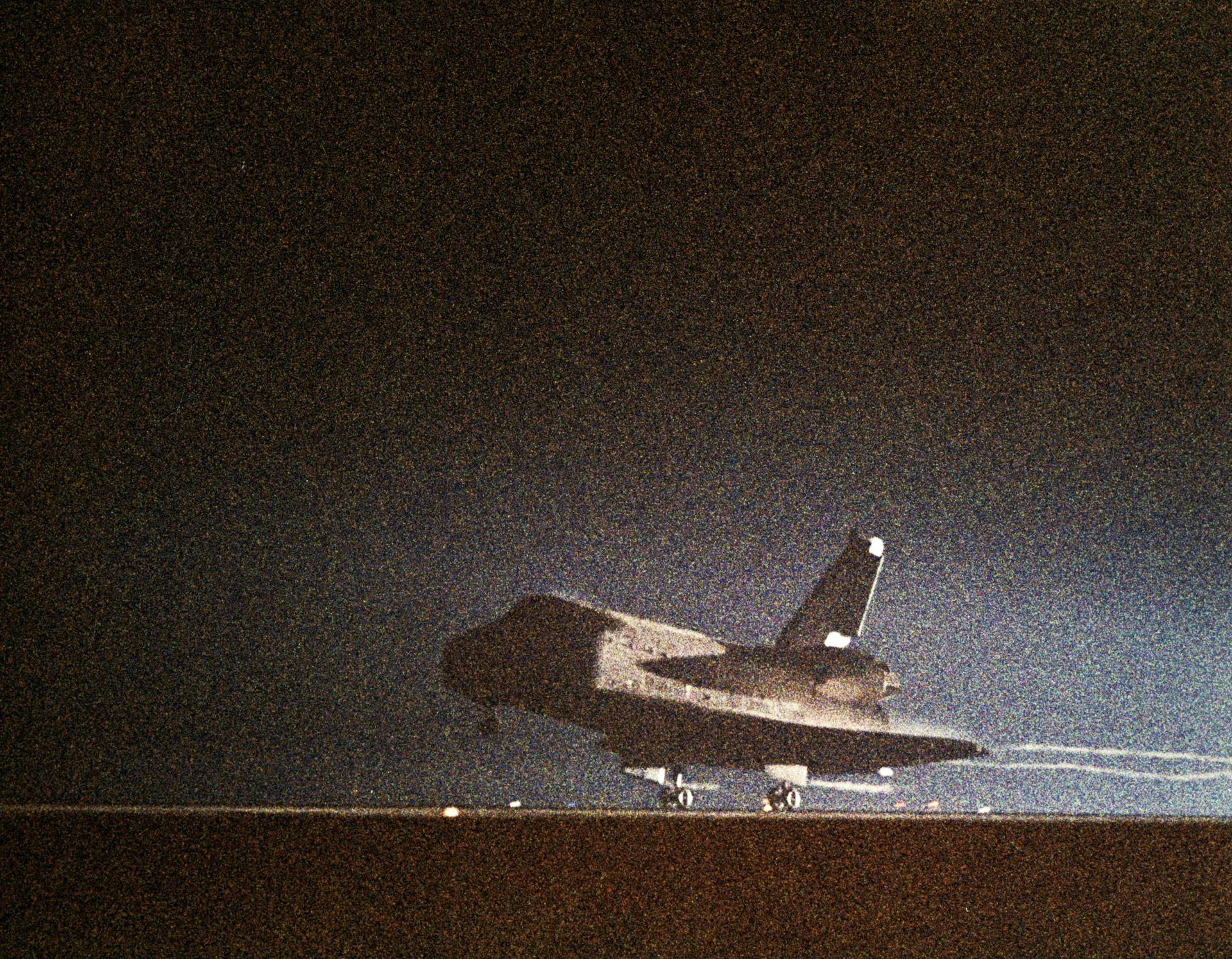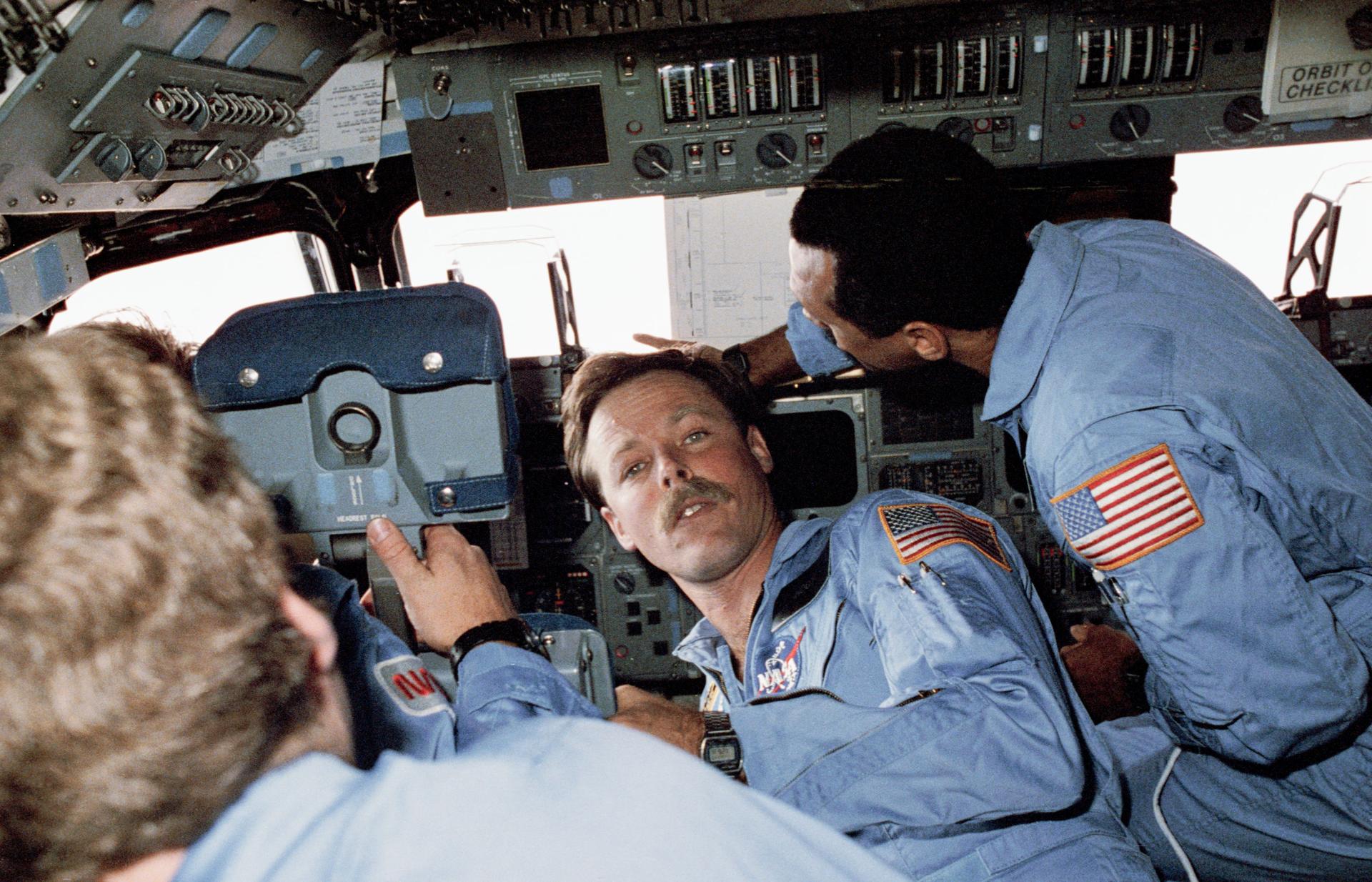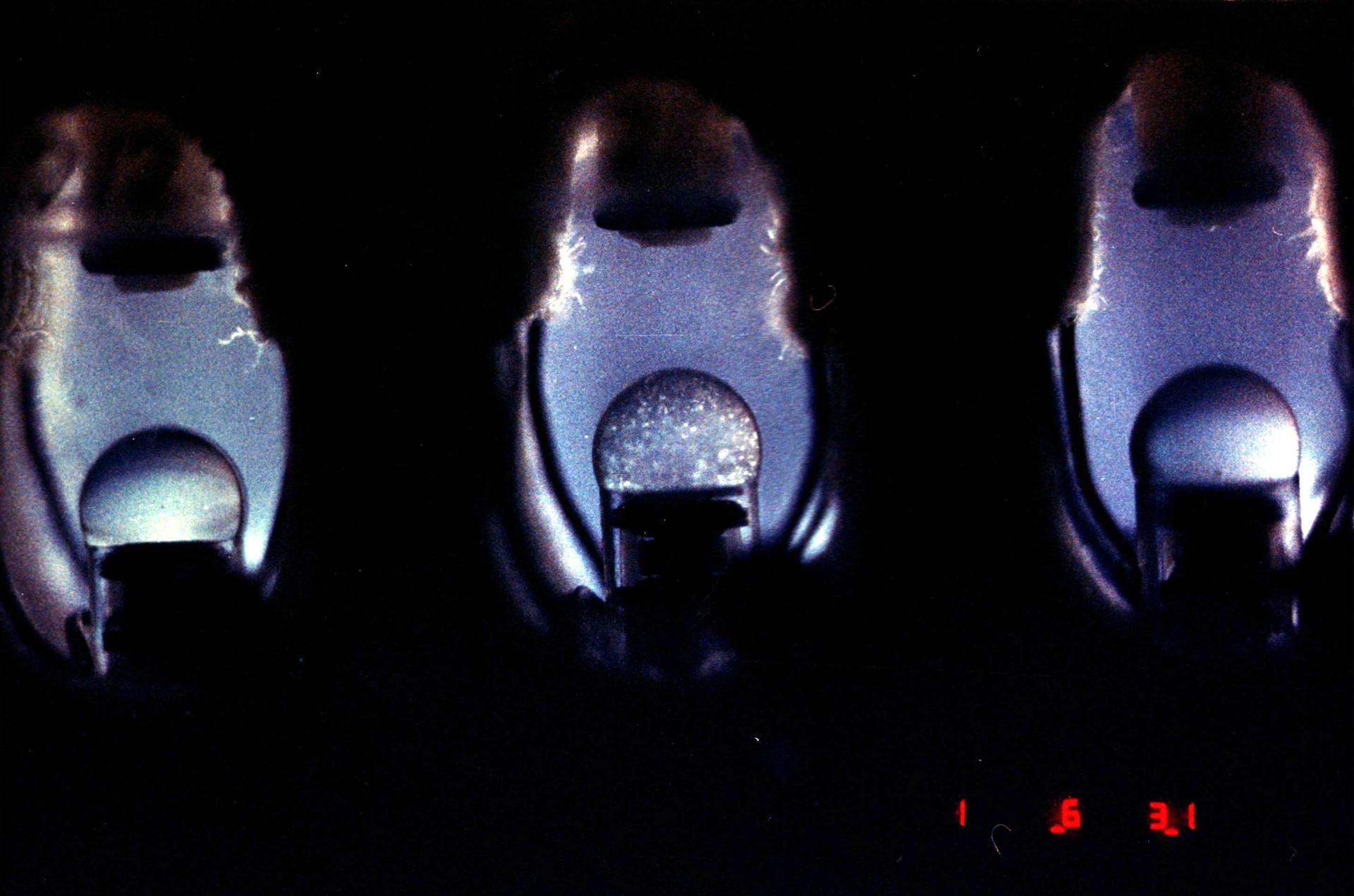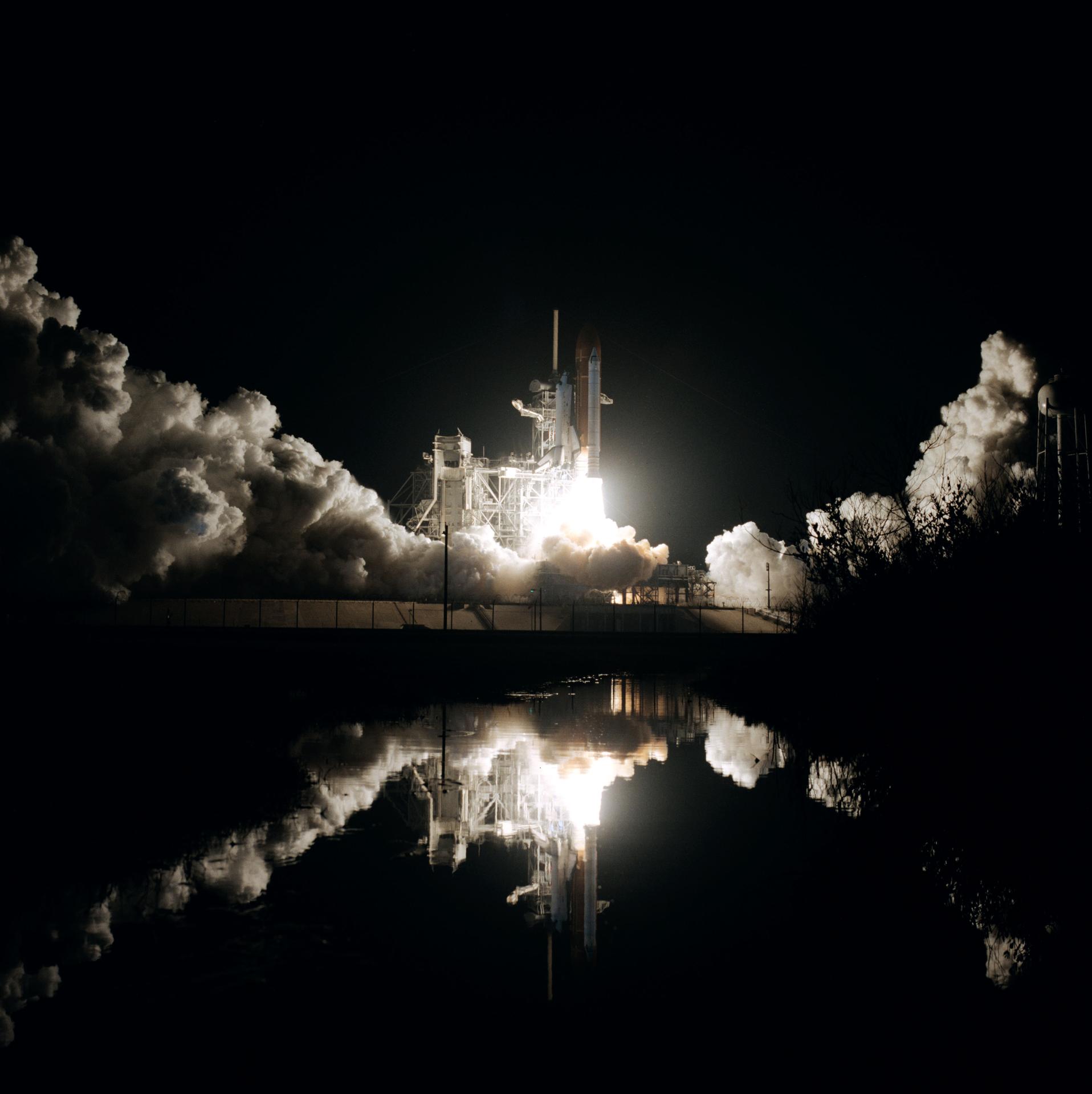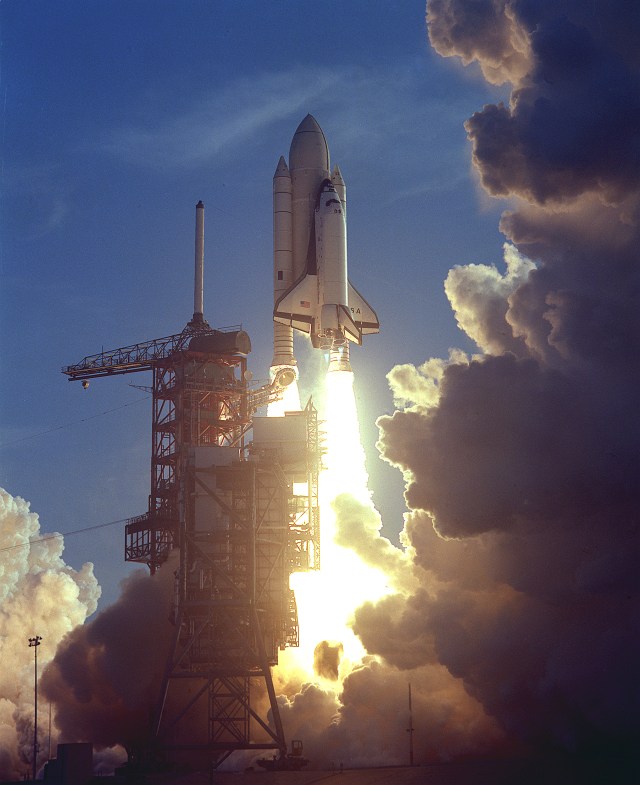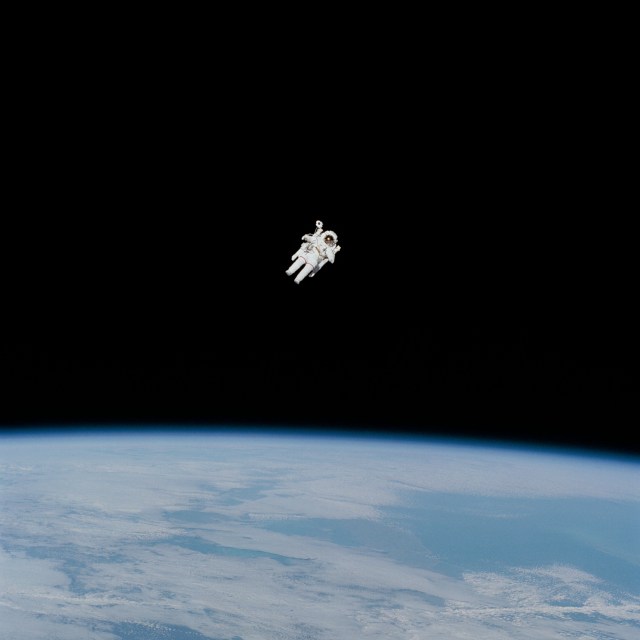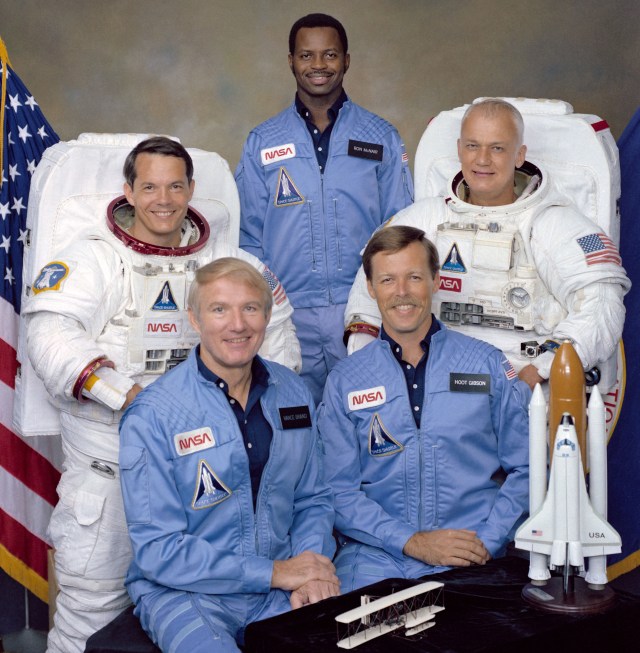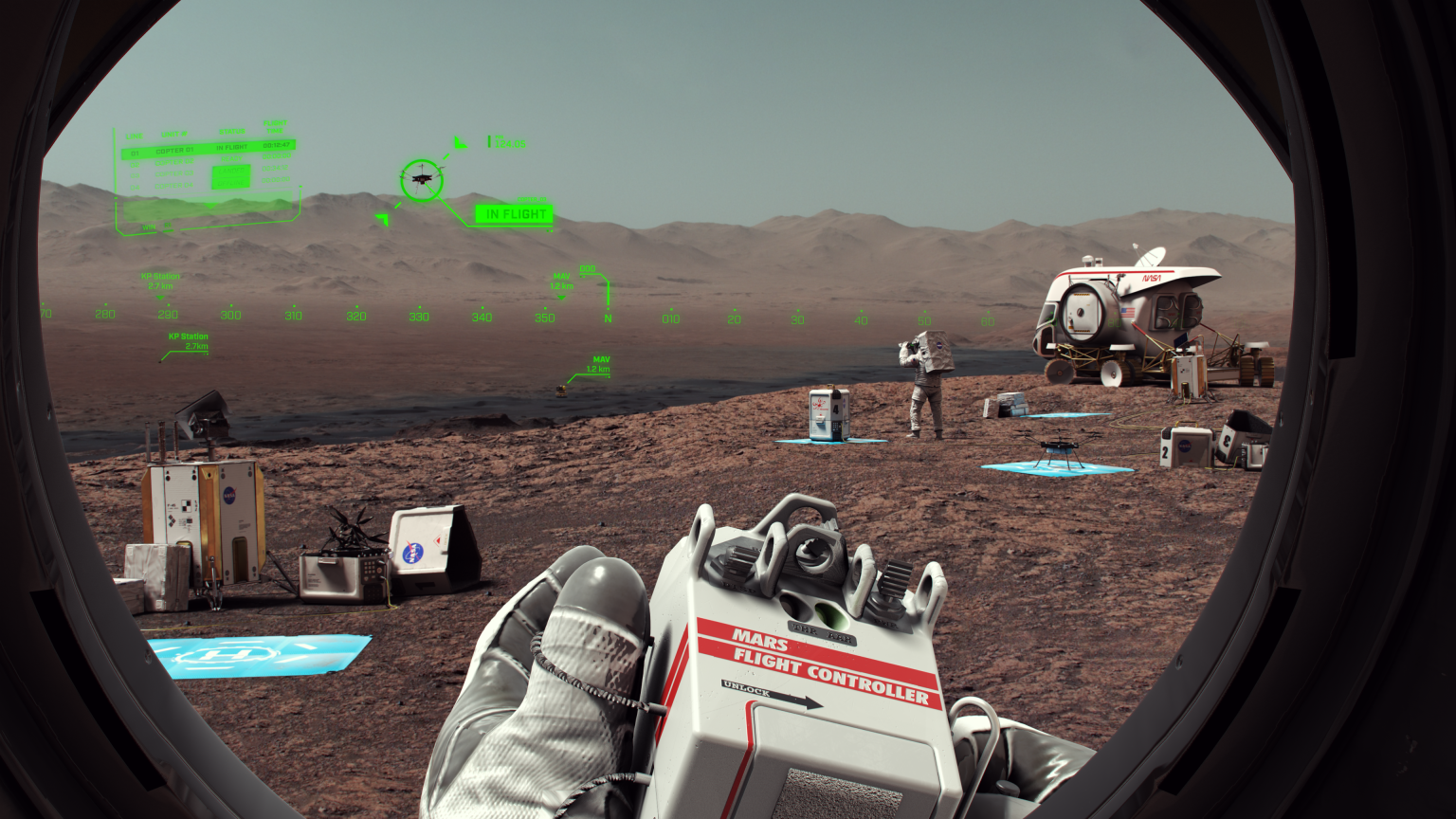
STS-61C
STS-61C was the 24th mission of NASA's Space Shuttle program, and the seventh mission of Space Shuttle Columbia.
Space Shuttle
mission duration
Launch
Landing
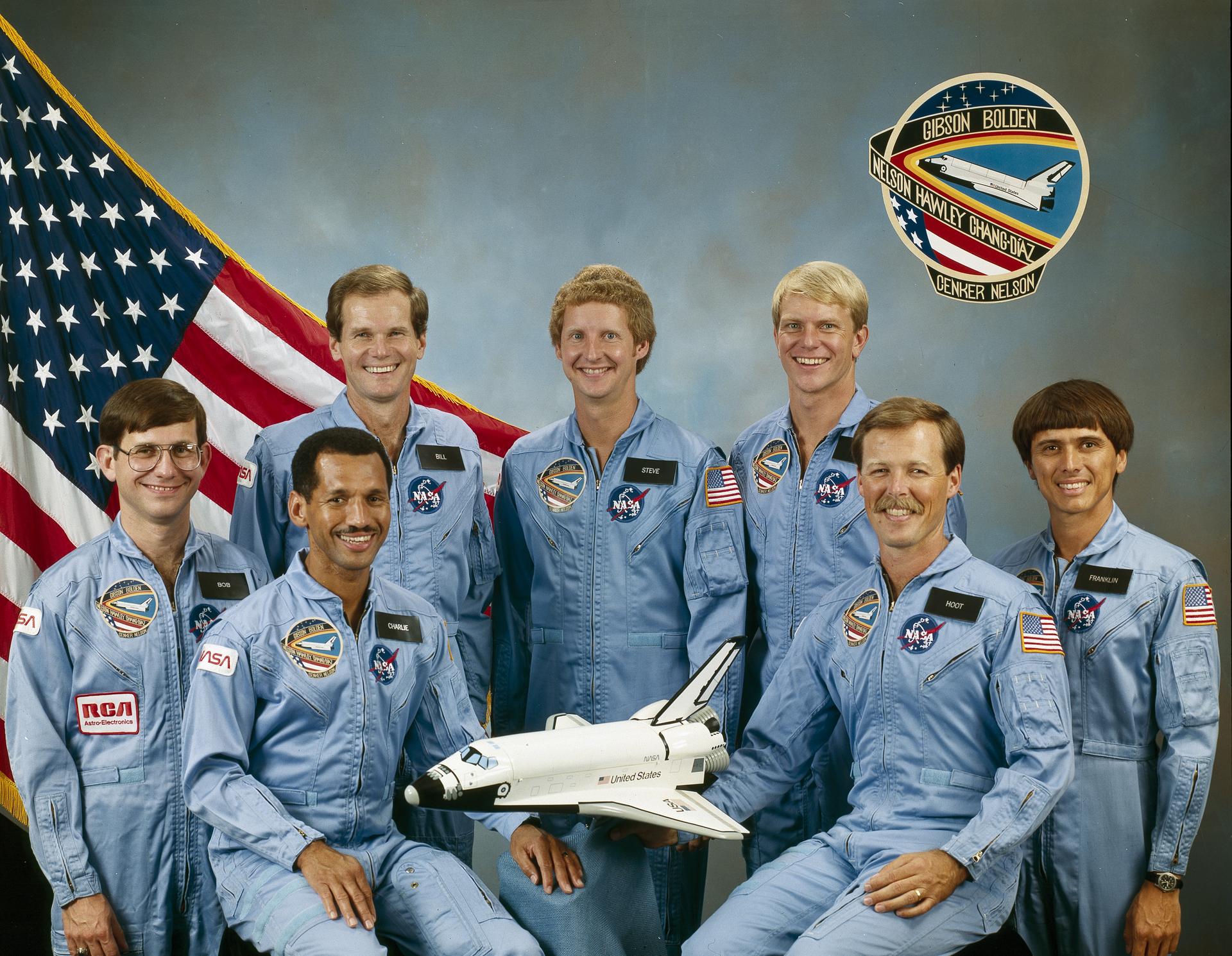
Mission Facts
Mission: SATCOM KU-1
Space Shuttle: Columbia
Launch Pad: 39A
Launch Weight: 256,003 pounds
Launched: January 12, 1986, 6:55:00 a.m. EST
Landing Site: Edwards Air Force Base, Calif.
Landing: January 18, 1986, 5:58:51 a.m. PST
Landing Weight: 210,161 pounds
Runway: 22
Rollout Distance: 10,202 feet
Rollout Time: 59 seconds
Revolution: 98
Mission Duration: 6 days, 2 hours, 3 minutes, 51 seconds
Returned to KSC: January 23, 1986
Orbit Altitude: 212 nautical miles
Orbit Inclination: 28.5 degrees
Miles Traveled: 2.5 million
Crew
Robert L. Gibson, Commander
Charles F. Bolden, Jr., Pilot
Franklin R. Chang-Diaz, Mission Specialist
Steven A. Hawley, Mission Specialist
George D. Nelson, Mission Specialist
Robert J. Cenker, Payload Specialist
U.S. Representative Bill Nelson, Payload Specialist
Launch/Landing Highlights
The launch set for December 18, 1985 was delayed one day when additional time needed to close out orbiter aft compartment. Another launch attempt on December 19 scrubbed at T- 14 seconds due to indication that the right solid rocket booster hydraulic power unit was exceeding the RPM redline speed limits. (This was later determined to be a false reading.) After an 18-day delay, a launch attempt January 6, 1986 halted at T-31 seconds due to the accidental draining of approximately 4,000 pounds of liquid oxygen from the external tank. The launch attempt January 7 scrubbed at T-9 minutes due to bad weather at both transoceanic abort landing sites (Moron, Spain and Dakar, Senegal). After a two-day delay, the launch set for January 9 was delayed due to the launch pad liquid oxygen sensor breaking off and lodging in the number two main engine prevalve. The launch set for January 10 was delayed two days due to heavy rains. The launch countdown on January 12 proceeded with no delays.
The planned landing at KSC, originally scheduled for January 17, moved to January 16 to save orbiter turnaround time. Landing attempts on January 16 and 17 were abandoned due to unacceptable weather at KSC. The landing set for January 18 at KSC but persisting bad weather forced a one revolution extension of mission and landing at Edwards.
Mission Highlights
The SATCOM KU-I (RCA Americom) satellite, attached to the Payload Assist Module-D2 (PAM-D2) motor, was deployed. Comet Halley Active Monitoring Program (CHAMP) experiment, a 35mm camera to photograph Comet Halley, did not function properly due to battery problems. Other payloads: Materials Science Laboratory-2 (MSL-2); Hitchhiker G-1; Infrared Imaging Experiment (IR-IE); Initial Blood Storage Experiment (IBSE); Hand-held Protein Crystal Growth (HPCG) experiment; three Shuttle Student Involvement Program (SSIP) experiments and 13 Get Away Specials (GAS), 12 of them mounted on a special GAS Bridge Assembly.
STS-61C
Shuttle News
Retired Space Shuttle Locations
Shuttle Atlantis – Kennedy Space Center Visitor Complex Shuttle Discovery – Steven F. Udvar-Hazy Center Shuttle Endeavour – California Science…
Read the Story



























